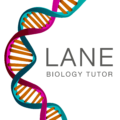Download the pdf. worksheets below and read these explanations regarding common student misconceptions.The topics include:
- Cell Structure
- Diffusion & Osmosis
- Carbohydrates
- Lipids and Proteins
- Enzymes
Cells
Cell membrane and cell wall – Cell membranes surround all cells and separate the contents inside from outside. Only plant cells have a cell wall made of cellulose which provide strength and structure. Bacterial and fungal cells can also have a cell wall but made of other substances. When looking at a diagram of a cell with a cell wall, the cell wall will always be the outer line and the inner line will be the membrane.
Nucleus – This controls the cell. Do not say it is the ´brain of the cell´. This is a KS3 level description and should not be used in GCSE.
Mitochondria – The organelle carries out respiration. This a a chemical reaction to release energy from glucose. Respiration is not breathing which is the process on getting air in and out of your lungs.
Plants have chloroplasts and mitochondria. They can carry out photosynthesis and respiration. When it is sunny they are doing both.
Diffusion + Osmosis
Diffusion – does not stop once an equilibrium is reached. There is always a random movement of particles but there is no more net movement of particles because there is no concentration gradient.
Osmosis – is the diffusion of water molecules and there must be a semi permeable substance (membrane) involved. The membrane allows water to pass though as the holes are very small but larger molecules cannot.
Carbohydrates
Carbohydrates are sugars, starch or cellulose used for energy by cells. Polysaccharides are polymers of sugars (saccharides) like starch, glycogen and cellulose. But for GCSE level you can say that starch, glycogen and cellulose are examples of carbohydrates.
Plants make starch but then can break it down into glucose to be used for respiration inside their cells.
Lipids and Proteins
A camel´s hump is a store of lipid not water
If a lipid is a solid at room temperature then it is a fat. If it is a liquid at room temperature it is an oil. However, for GCSE level you can say fat or lipid.
Proteins are not made of DNA but amino acids. DNA codes for the synthesis of proteins.
Enzymes
Enzymes are a type of protein. Proteins involved with metabolic reaction are enzymes. Not all proteins are enzymes.
Enzymes have the active site., substrate do not.
Active site and substrate have a complementary shape not the same shape.
Enzymes do not die when heated, they denature which means the bonds holding their active site break and its shape changes and no longer fits the substrate. You cannot kill a protein.
When the temperature is reduced enzymes do not denature. They do not unravel and break apart as their bonds are not broken. They just have less kinetic energy and therefore rate of reaction. Only when you freeze enzymes and then unfreeze them may an enzyme become denatured.
Cells + Biological Molecules Worksheets pdf.
Like these GCSE worksheets?
You can purchase the GCSE Bundle 2 pack with this link.
